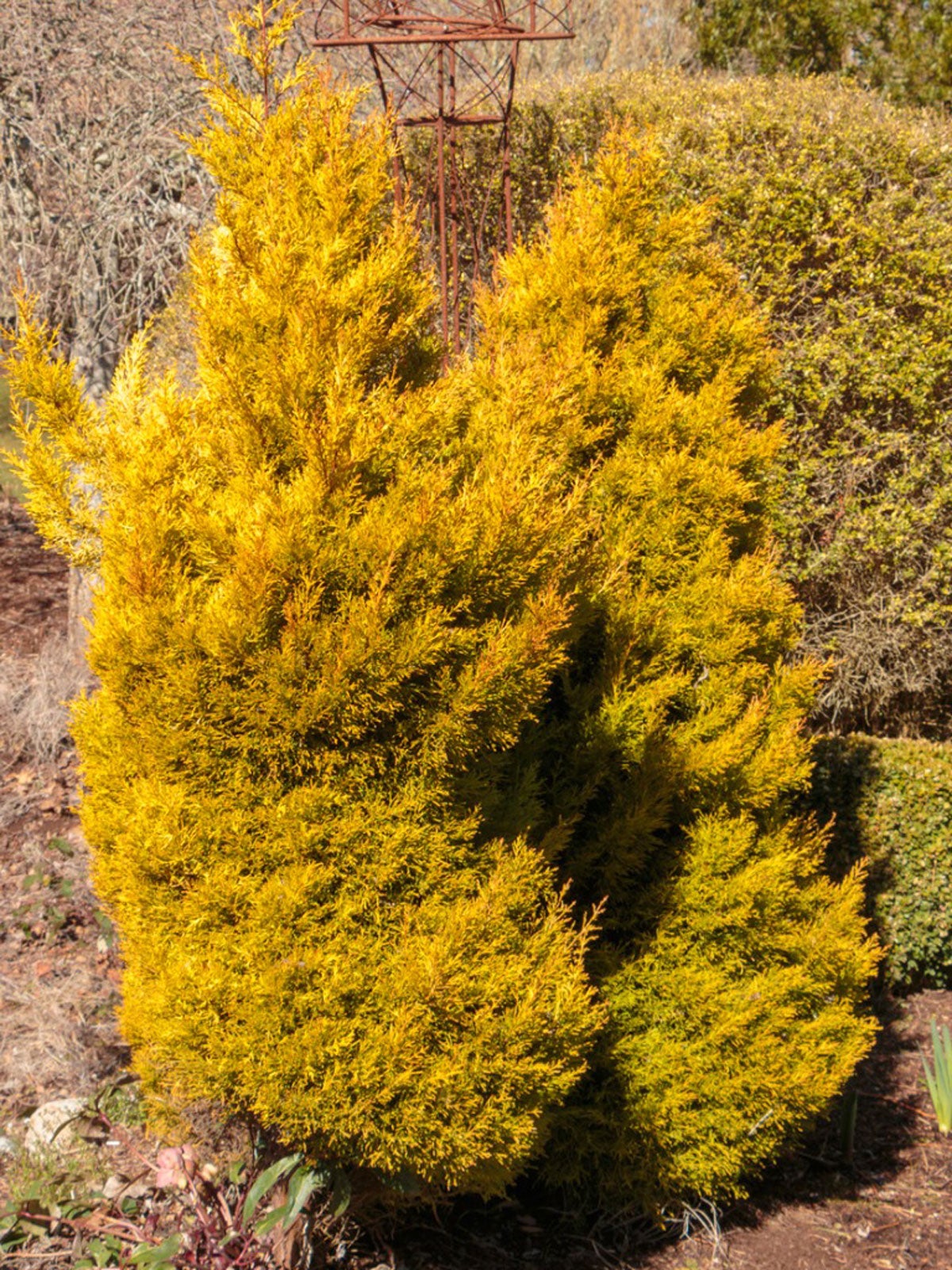Lemon Cypress: Complete Plant Care And Growing Guide
The easy-growing Lemon Cypress tree offers a bright splash of color, a lovely fragrance and an interesting accent in any garden or yard.


Quick Facts:
Botanical name: Hesperocyparis macrocarpa
Height: 6 to 40 feet
Spread: 1 to 4 feet
Sun exposure: either full sun or partial shade
Soil requirements: accepts most well-draining soil
Hardiness zones: USDA zones 7 - 11
When to plant: plant in spring or fall
Sign up for the Gardening Know How newsletter today and receive a free copy of our e-book "How to Grow Delicious Tomatoes".
Meet the Lemon Cypress
The lemon cypress, also called the Monterey cypress, is a striking evergreen. These popular ornamentals are grown for their bright chartreuse foliage colors. With their informal habit, these cypress trees make good lawn specimens. Several cultivars (including Goldcrest Wilma and Goldcrest) offer a smaller presentation and even more brilliant coloration. They can be grown in a container or in a garden bed.
Lemon Cypress Care
Lemon cypress trees are easy-to-grow plants. They offer bright yellow foliage color and their informal habit. These cypress trees are often grown as lawn specimens and will stand up to salt wind.
Light
Lemon cypress care begins with having a good placement. These trees can thrive in either full, direct sun or partial shade. This means either a site with at least 6 hours of direct sunlight each day, or a site with between 2 and 6 hours a day.
Water
As with most trees, lemon cypress trees require regular irrigation when they are first planted. However, they are drought tolerant once established and those planted in the garden bed do not require irrigation more than once a week during the growing season. However, container plants will need more regular irrigation.
Temperature & Humidity
Care of lemon cypress is fairly easy in the correct location. Lemon cypress is hardy down to USDA zone 7 and up to zone 11.
Soil
These trees tolerate a wide range of types of soil and acidity. However, they require well-drained soil.
Fertilizer
Lemon cypress trees grow well without fertilizer and it is not recommended..
Problems, Pests & Diseases
Lemon cypress can be vulnerable to strong winds. They grow quickly, especially when grown in rich soil, which should be avoided.
These plants can be vulnerable to several pests and diseases. These include borers. Armillaria, Phytophthora, root rot, and coryneum canker.
Tips for Planting a Lemon Cypress Tree
Lemon cypress, especially the dwarf cultivar, grows easily in containers. They can also be planted in the landscape in an area that gets adequate direct sun. Well-draining soil is essential, but avoid rich soils since the plant’s growth rate in rich soil can encourage a vulnerability to wind damage.
Pruning
Lemon cypress trees require little if any pruning. The sole exception is cypress grown as hedges that need trimming.
Propagation
Yellow cypress are conifers that produce seeds in their cones. These seeds can be used for propagation. However, if you own a cultivar, propagating from seed will not produce a plant with the same features as the parent. It is also possible to propagate from stem cuttings taken in winter.
Repotting Lemon Cypress Trees
If you decide to grow lemon cypress in a container, it may be necessary to repot the tree from time to time. Every three to four years, move the cypress to a container at least one inch (2.5 cm) wider than the old pot and backfill with fresh potting mix.
Lemon Cypress Varieties
The most popular lemon cypress cultivars are Gold Crest and Goldcrest Wilma. The former grows relatively quickly (at about 10 inches (25 cm) a year) to 40 feet (12 m). The Goldcrest Wilma cultivar is a dwarf selection of the cultivar Gold Crest. It matures to 6 feet (1.8 m) tall.
Frequently Asked Questions
Can Lemon Cypress Survive Winter?
Lemon cypress survives winter if planted in the appropriate hardiness zones, 7 through 12. Otherwise, you will have to overwinter the plants indoors during the winter.
Why Is My Lemon Cypress Dry and Brittle?
Lemon cypress foliage can become dry and brittle if the plant does not receive appropriate water or is subjected to frequent wind.

Teo Spengler is a master gardener and a docent at the San Francisco Botanical Garden, where she hosts public tours. She has studied horticulture and written about nature, trees, plants, and gardening for more than two decades, following a career as an attorney and legal writer. Her extended family includes some 30 houseplants and hundreds of outdoor plants, including 250 trees, which are her main passion. Spengler currently splits her life between San Francisco and the French Basque Country, though she was raised in Alaska, giving her experience of gardening in a range of climates.